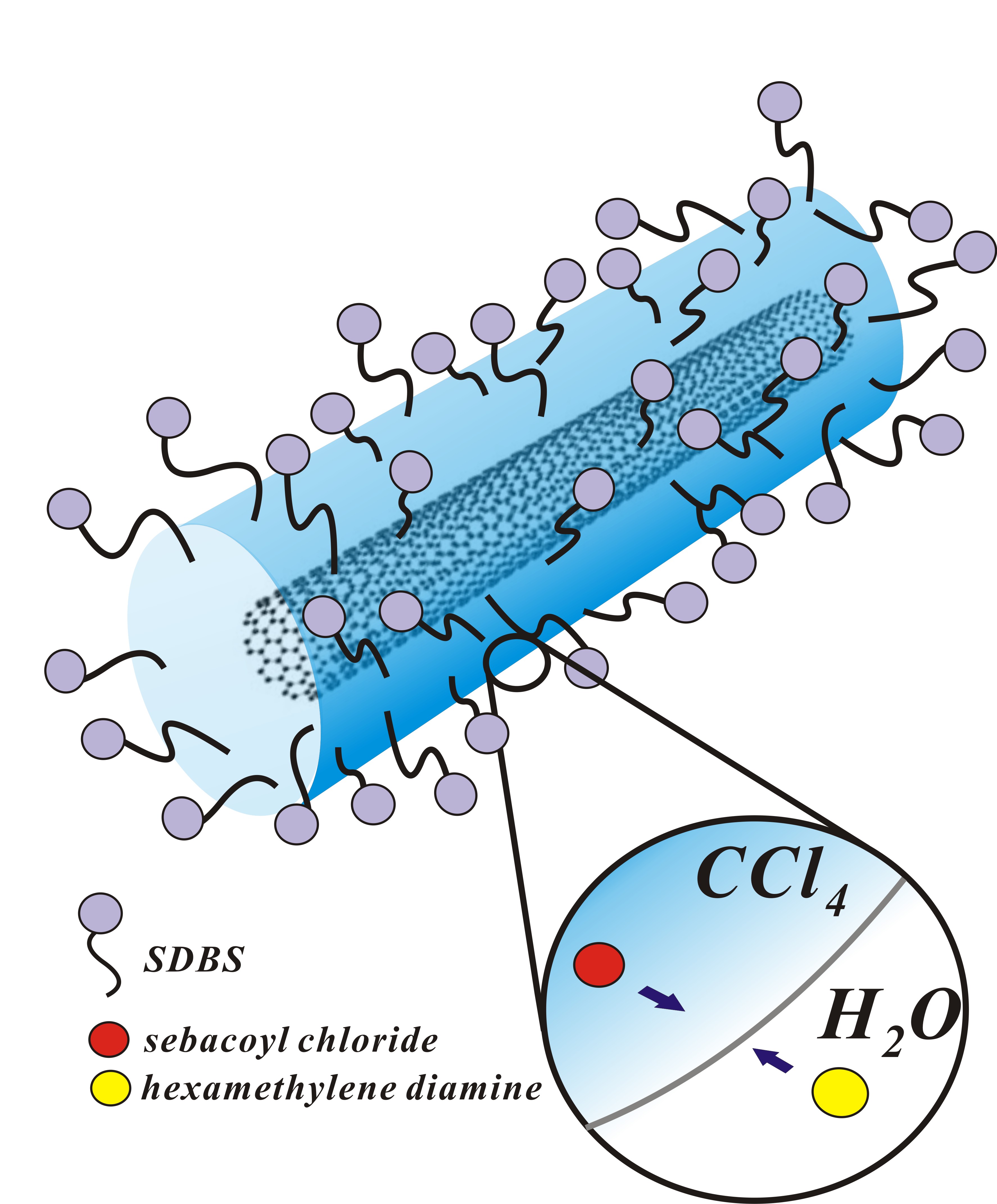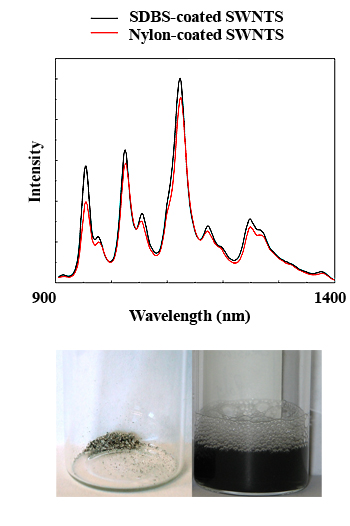

The surfactant surrounding the nanotube in an aqueous suspension provides many benefits. However, the inability to alter the surface properties often limits the functionality of the nanotube. For example, biomedical applications often encounter extreme pH and salt concentration in cells that may influence the dispersion stability and fluorescence emission of SWCNTs. The formation of different coatings around SWCNTs will alter their surfaces, changing their wettability and stability to extrinsic environmental effects.
Interfacial (emulsion) polymerization is a general chemical approach applied to the formation of numerous polymers. We have shown that swelled micelle states can be used for the in situ interfacial polymerization of Nylon 6,10. These polymerized nanotubes remain dispersed in the aqueous phase. Further, no covalent functionalization of the sidewalls has occurred indicating that the intrinsic properties of the SWCNTs are maintained. For example, these coated nanotubes maintain the same fluorescence intensity after polymerization, which is superb considering the acidic nature of the suspension after polymerization (pH ~ 3). The SWCNTs can also be freeze-dried and redispersed. This novel approach enables a simple generalized method to alter the surface properties through a multitude of interfacial polymerization chemistries to coat SWCNTs.
Related Publications
W.-C. Chen, R.K. Wang, and K.J. Ziegler. Coating Individual Single-Walled Carbon Nanotubes with Nylon 6, 10 through Emulsion Polymerization. ACS Appl. Mater. Inter. 2009, 1, 1821. [link]
 New Surface Coatings around SWCNTs
New Surface Coatings around SWCNTs 